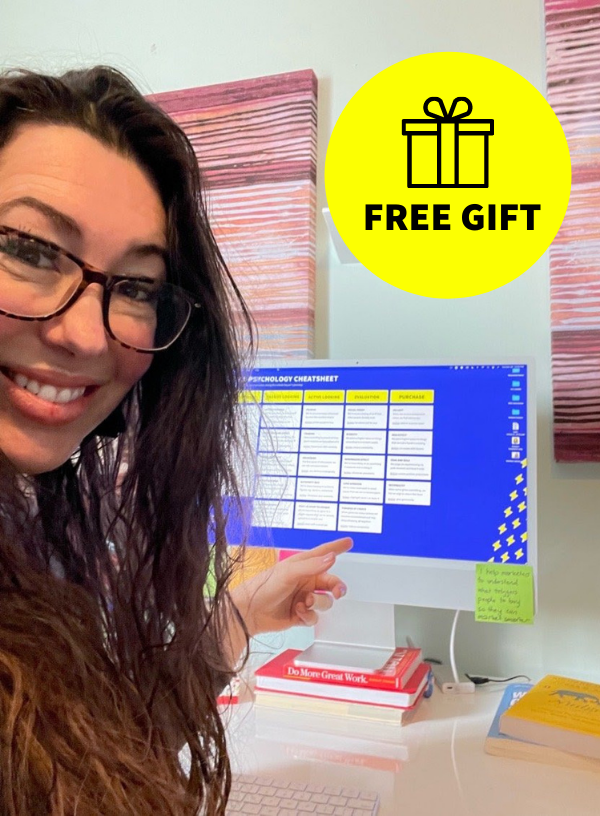I’ve spent 1500+ hours learning about cognitive biases and heuristics (AKA the stuff that drives *your customers* to buy)
Here are the top 19 concepts that marketers need to know:
Here are the top 19 concepts that marketers need to know:
Before we dive in...
1. What you’re about to learn is powerful—use it for good
2. If you read this post all the way to the end, there’s a surprise for you https://abs.twimg.com/emoji/v2/... draggable="false" alt="🎁" title="Ingepakt cadeau" aria-label="Emoji: Ingepakt cadeau">
https://abs.twimg.com/emoji/v2/... draggable="false" alt="🎁" title="Ingepakt cadeau" aria-label="Emoji: Ingepakt cadeau">
1. What you’re about to learn is powerful—use it for good
2. If you read this post all the way to the end, there’s a surprise for you
1/ TRIGGER EVENTS
Every purchase begins with a trigger event. It’s the moment a buyer realizes they may need a new solution.
Trigger events can be:
Biological (eg. Being hungry)
Situational (eg. Getting engaged)
Emotional (eg. Feeling jealous)
Social (eg. Fight with spouse)
Every purchase begins with a trigger event. It’s the moment a buyer realizes they may need a new solution.
Trigger events can be:
Biological (eg. Being hungry)
Situational (eg. Getting engaged)
Emotional (eg. Feeling jealous)
Social (eg. Fight with spouse)
1/ TRIGGER EVENTS CON& #39;T
When you discover your customers’ trigger events, you can market smarter
You can get in front of people sooner, in less crowded channels, with better messages
Apple gets it
What trigger event do you think they’re leveraging with this ad?
When you discover your customers’ trigger events, you can market smarter
You can get in front of people sooner, in less crowded channels, with better messages
Apple gets it
What trigger event do you think they’re leveraging with this ad?
2/ DISTINCTIVENESS
We’re more likely to notice stuff that stands out from the rest
That’s why @LouisSlices—the king of radical differentiation—changed his headshot from smiley guy in a suit (boring https://abs.twimg.com/emoji/v2/... draggable="false" alt="😴" title="Slapend gezicht" aria-label="Emoji: Slapend gezicht">) to feisty marketing bullshit fighter
https://abs.twimg.com/emoji/v2/... draggable="false" alt="😴" title="Slapend gezicht" aria-label="Emoji: Slapend gezicht">) to feisty marketing bullshit fighter
The lesson?
 https://abs.twimg.com/emoji/v2/... draggable="false" alt="👉" title="Rug van hand met naar rechts wijzende wijsvinger" aria-label="Emoji: Rug van hand met naar rechts wijzende wijsvinger"> Differentiate (or die)
https://abs.twimg.com/emoji/v2/... draggable="false" alt="👉" title="Rug van hand met naar rechts wijzende wijsvinger" aria-label="Emoji: Rug van hand met naar rechts wijzende wijsvinger"> Differentiate (or die)
We’re more likely to notice stuff that stands out from the rest
That’s why @LouisSlices—the king of radical differentiation—changed his headshot from smiley guy in a suit (boring
The lesson?
3/ MERE EXPOSURE EFFECT
The more we see something, the more we come to like and trust it
That’s why prolific marketers like @TheCoolestCool expertly repurpose their content so they show up consistently in the places their buyers hang out
The lesson?
 https://abs.twimg.com/emoji/v2/... draggable="false" alt="👉" title="Rug van hand met naar rechts wijzende wijsvinger" aria-label="Emoji: Rug van hand met naar rechts wijzende wijsvinger"> Show up consistently
https://abs.twimg.com/emoji/v2/... draggable="false" alt="👉" title="Rug van hand met naar rechts wijzende wijsvinger" aria-label="Emoji: Rug van hand met naar rechts wijzende wijsvinger"> Show up consistently
The more we see something, the more we come to like and trust it
That’s why prolific marketers like @TheCoolestCool expertly repurpose their content so they show up consistently in the places their buyers hang out
The lesson?
4/ STATUS QUO BIAS
We’re resistant to change and prefer the known to unknown
That’s why smart marketers like @amandanat use stats, facts, and stories to jolt readers into realizing that sticking with the status quo is risky
The lesson?
 https://abs.twimg.com/emoji/v2/... draggable="false" alt="👉" title="Rug van hand met naar rechts wijzende wijsvinger" aria-label="Emoji: Rug van hand met naar rechts wijzende wijsvinger"> Show the risk of doing nothing
https://abs.twimg.com/emoji/v2/... draggable="false" alt="👉" title="Rug van hand met naar rechts wijzende wijsvinger" aria-label="Emoji: Rug van hand met naar rechts wijzende wijsvinger"> Show the risk of doing nothing
We’re resistant to change and prefer the known to unknown
That’s why smart marketers like @amandanat use stats, facts, and stories to jolt readers into realizing that sticking with the status quo is risky
The lesson?
5/ SOCIAL CURRENCY
We’re more likely to share stuff that makes us look good to others
That’s why people drop $$$ on NFTs and why your Twitter feed is full of profile pics with CryptoPunks, Lazy Lions & Bored Apes, which drives demand https://abs.twimg.com/emoji/v2/... draggable="false" alt="⬆️" title="Pijl omhoog" aria-label="Emoji: Pijl omhoog">
https://abs.twimg.com/emoji/v2/... draggable="false" alt="⬆️" title="Pijl omhoog" aria-label="Emoji: Pijl omhoog">
The lesson?
 https://abs.twimg.com/emoji/v2/... draggable="false" alt="👉" title="Rug van hand met naar rechts wijzende wijsvinger" aria-label="Emoji: Rug van hand met naar rechts wijzende wijsvinger"> Make sharing gratifying
https://abs.twimg.com/emoji/v2/... draggable="false" alt="👉" title="Rug van hand met naar rechts wijzende wijsvinger" aria-label="Emoji: Rug van hand met naar rechts wijzende wijsvinger"> Make sharing gratifying
We’re more likely to share stuff that makes us look good to others
That’s why people drop $$$ on NFTs and why your Twitter feed is full of profile pics with CryptoPunks, Lazy Lions & Bored Apes, which drives demand
The lesson?
6/ THE BARNUM EFFECT
We’re drawn to statements that feel personal (even if they could actually apply to anyone)
That’s why world-class writers like @dickiebush ask Barnum-style Qs like these on his Ship30for30 sales page. Can you relate?
The lesson?
 https://abs.twimg.com/emoji/v2/... draggable="false" alt="👉" title="Rug van hand met naar rechts wijzende wijsvinger" aria-label="Emoji: Rug van hand met naar rechts wijzende wijsvinger"> Make it feel personal
https://abs.twimg.com/emoji/v2/... draggable="false" alt="👉" title="Rug van hand met naar rechts wijzende wijsvinger" aria-label="Emoji: Rug van hand met naar rechts wijzende wijsvinger"> Make it feel personal
We’re drawn to statements that feel personal (even if they could actually apply to anyone)
That’s why world-class writers like @dickiebush ask Barnum-style Qs like these on his Ship30for30 sales page. Can you relate?
The lesson?
7/ PRIMING
We’re unconsciously influenced by even small details
That’s why I use imagery on my Clarity Call Cheatsheet sales page that primes visitors to connect customer discovery with better marketing and increased sales
The lesson?
 https://abs.twimg.com/emoji/v2/... draggable="false" alt="👉" title="Rug van hand met naar rechts wijzende wijsvinger" aria-label="Emoji: Rug van hand met naar rechts wijzende wijsvinger"> Prime people to buy
https://abs.twimg.com/emoji/v2/... draggable="false" alt="👉" title="Rug van hand met naar rechts wijzende wijsvinger" aria-label="Emoji: Rug van hand met naar rechts wijzende wijsvinger"> Prime people to buy
We’re unconsciously influenced by even small details
That’s why I use imagery on my Clarity Call Cheatsheet sales page that primes visitors to connect customer discovery with better marketing and increased sales
The lesson?
8/ FRAMING
How something is presented very much impacts our perception of it
That’s why @AmandaMGoetz’s company House of Wise doesn’t just sell CBD products but instead sells less stress, hotter sex, and better sleep
The lesson?
 https://abs.twimg.com/emoji/v2/... draggable="false" alt="👉" title="Rug van hand met naar rechts wijzende wijsvinger" aria-label="Emoji: Rug van hand met naar rechts wijzende wijsvinger"> Frame your offer carefully
https://abs.twimg.com/emoji/v2/... draggable="false" alt="👉" title="Rug van hand met naar rechts wijzende wijsvinger" aria-label="Emoji: Rug van hand met naar rechts wijzende wijsvinger"> Frame your offer carefully
How something is presented very much impacts our perception of it
That’s why @AmandaMGoetz’s company House of Wise doesn’t just sell CBD products but instead sells less stress, hotter sex, and better sleep
The lesson?
9/ ANCHORING
The first piece of information we see often sets our expectations
That’s why Snickers grew sales by 38% simply by changing the anchor from ‘them’ to ‘18’ (cc: the @thebrainybiz podcast)
The lesson?
 https://abs.twimg.com/emoji/v2/... draggable="false" alt="👉" title="Rug van hand met naar rechts wijzende wijsvinger" aria-label="Emoji: Rug van hand met naar rechts wijzende wijsvinger"> Use anchors strategically
https://abs.twimg.com/emoji/v2/... draggable="false" alt="👉" title="Rug van hand met naar rechts wijzende wijsvinger" aria-label="Emoji: Rug van hand met naar rechts wijzende wijsvinger"> Use anchors strategically
The first piece of information we see often sets our expectations
That’s why Snickers grew sales by 38% simply by changing the anchor from ‘them’ to ‘18’ (cc: the @thebrainybiz podcast)
The lesson?
10/ AUTHORITY BIAS
We’re more trusting of authority figures (eg. doctors, celebrities, media)
That’s why baddies like @kaleighf and @The_MMW showcase the big publications they write for or have been featured in their Twitter profiles
The lesson?
 https://abs.twimg.com/emoji/v2/... draggable="false" alt="👉" title="Rug van hand met naar rechts wijzende wijsvinger" aria-label="Emoji: Rug van hand met naar rechts wijzende wijsvinger"> Showcase your authority
https://abs.twimg.com/emoji/v2/... draggable="false" alt="👉" title="Rug van hand met naar rechts wijzende wijsvinger" aria-label="Emoji: Rug van hand met naar rechts wijzende wijsvinger"> Showcase your authority
We’re more trusting of authority figures (eg. doctors, celebrities, media)
That’s why baddies like @kaleighf and @The_MMW showcase the big publications they write for or have been featured in their Twitter profiles
The lesson?
11/ FOOT-IN-DOOR TECHNIQUE
We’re more likely to agree to a bigger request after already agreeing to a small one
This is why product-led growth experts like @ramlijohn suggest letting prospects try your product for free *before* committing
The lesson?
 https://abs.twimg.com/emoji/v2/... draggable="false" alt="👉" title="Rug van hand met naar rechts wijzende wijsvinger" aria-label="Emoji: Rug van hand met naar rechts wijzende wijsvinger"> Start with a small ask
https://abs.twimg.com/emoji/v2/... draggable="false" alt="👉" title="Rug van hand met naar rechts wijzende wijsvinger" aria-label="Emoji: Rug van hand met naar rechts wijzende wijsvinger"> Start with a small ask
We’re more likely to agree to a bigger request after already agreeing to a small one
This is why product-led growth experts like @ramlijohn suggest letting prospects try your product for free *before* committing
The lesson?
12/ SOCIAL PROOF
We& #39;re more trusting of stuff that other people already trust
That’s why smart marketers like @coreyhainesco pepper their newsletter signup pages with glowing testimonials and headshots of well-known marketers
The lesson?
 https://abs.twimg.com/emoji/v2/... draggable="false" alt="👉" title="Rug van hand met naar rechts wijzende wijsvinger" aria-label="Emoji: Rug van hand met naar rechts wijzende wijsvinger"> Let others sell for you
https://abs.twimg.com/emoji/v2/... draggable="false" alt="👉" title="Rug van hand met naar rechts wijzende wijsvinger" aria-label="Emoji: Rug van hand met naar rechts wijzende wijsvinger"> Let others sell for you
We& #39;re more trusting of stuff that other people already trust
That’s why smart marketers like @coreyhainesco pepper their newsletter signup pages with glowing testimonials and headshots of well-known marketers
The lesson?
13/ SCARCITY
We place a higher value on things when they& #39;re in limited supply
That’s why when Apple releases a new product they limit the number available so that they create a buying frenzy
The lesson?
 https://abs.twimg.com/emoji/v2/... draggable="false" alt="👉" title="Rug van hand met naar rechts wijzende wijsvinger" aria-label="Emoji: Rug van hand met naar rechts wijzende wijsvinger"> Reducing availability can drive demand
https://abs.twimg.com/emoji/v2/... draggable="false" alt="👉" title="Rug van hand met naar rechts wijzende wijsvinger" aria-label="Emoji: Rug van hand met naar rechts wijzende wijsvinger"> Reducing availability can drive demand
We place a higher value on things when they& #39;re in limited supply
That’s why when Apple releases a new product they limit the number available so that they create a buying frenzy
The lesson?
14/ BANDWAGON EFFECT
We’re more likely to do something if everyone else is doing it
That’s why in 1957 McDonald’s started showing how many customers they’d served on their signs. Today, McDonald& #39;s serves 62M customers PER DAY https://abs.twimg.com/emoji/v2/... draggable="false" alt="😲" title="Verwonderd gezicht" aria-label="Emoji: Verwonderd gezicht">
https://abs.twimg.com/emoji/v2/... draggable="false" alt="😲" title="Verwonderd gezicht" aria-label="Emoji: Verwonderd gezicht">
The lesson?
 https://abs.twimg.com/emoji/v2/... draggable="false" alt="👉" title="Rug van hand met naar rechts wijzende wijsvinger" aria-label="Emoji: Rug van hand met naar rechts wijzende wijsvinger"> Showcase popularity
https://abs.twimg.com/emoji/v2/... draggable="false" alt="👉" title="Rug van hand met naar rechts wijzende wijsvinger" aria-label="Emoji: Rug van hand met naar rechts wijzende wijsvinger"> Showcase popularity
We’re more likely to do something if everyone else is doing it
That’s why in 1957 McDonald’s started showing how many customers they’d served on their signs. Today, McDonald& #39;s serves 62M customers PER DAY
The lesson?
15/ LOSS AVERSION
We’re more motivated to avoid losses than we are to receive gains
That’s why Amazon highlights the savings people could *lose* when they cancel their Prime membership to deter them from canceling (cc: @p_agnew)
The lesson?
 https://abs.twimg.com/emoji/v2/... draggable="false" alt="👉" title="Rug van hand met naar rechts wijzende wijsvinger" aria-label="Emoji: Rug van hand met naar rechts wijzende wijsvinger"> Highlight what’s at stake
https://abs.twimg.com/emoji/v2/... draggable="false" alt="👉" title="Rug van hand met naar rechts wijzende wijsvinger" aria-label="Emoji: Rug van hand met naar rechts wijzende wijsvinger"> Highlight what’s at stake
We’re more motivated to avoid losses than we are to receive gains
That’s why Amazon highlights the savings people could *lose* when they cancel their Prime membership to deter them from canceling (cc: @p_agnew)
The lesson?
16/ RELATIVITY
We struggle to understand the value of a purchase without something to compare it to
That’s why Costco puts the TVs & laptops near the entrance. Seeing how cheap big-ticket items makes other products appear cheaper too
The lesson?
 https://abs.twimg.com/emoji/v2/... draggable="false" alt="👉" title="Rug van hand met naar rechts wijzende wijsvinger" aria-label="Emoji: Rug van hand met naar rechts wijzende wijsvinger"> Use contrast to show value
https://abs.twimg.com/emoji/v2/... draggable="false" alt="👉" title="Rug van hand met naar rechts wijzende wijsvinger" aria-label="Emoji: Rug van hand met naar rechts wijzende wijsvinger"> Use contrast to show value
We struggle to understand the value of a purchase without something to compare it to
That’s why Costco puts the TVs & laptops near the entrance. Seeing how cheap big-ticket items makes other products appear cheaper too
The lesson?
17/ DELIGHT
When we receive unexpected value we feel intense joy
That’s why Asana users are delighted when they first see the celebration unicorn (AKA a surprise unicorn graphic that flies across your screen after completing a few tasks)
The lesson?
 https://abs.twimg.com/emoji/v2/... draggable="false" alt="👉" title="Rug van hand met naar rechts wijzende wijsvinger" aria-label="Emoji: Rug van hand met naar rechts wijzende wijsvinger"> Deliver surprise value
https://abs.twimg.com/emoji/v2/... draggable="false" alt="👉" title="Rug van hand met naar rechts wijzende wijsvinger" aria-label="Emoji: Rug van hand met naar rechts wijzende wijsvinger"> Deliver surprise value
When we receive unexpected value we feel intense joy
That’s why Asana users are delighted when they first see the celebration unicorn (AKA a surprise unicorn graphic that flies across your screen after completing a few tasks)
The lesson?
18/ IKEA EFFECT
We place very high value on things that we had a hand in creating
That’s why Canva makes it extremely easy to create your first design by providing 1000s of templates
They help regular people feel like world-class designers
The lesson?
 https://abs.twimg.com/emoji/v2/... draggable="false" alt="👉" title="Rug van hand met naar rechts wijzende wijsvinger" aria-label="Emoji: Rug van hand met naar rechts wijzende wijsvinger"> Co-create with users
https://abs.twimg.com/emoji/v2/... draggable="false" alt="👉" title="Rug van hand met naar rechts wijzende wijsvinger" aria-label="Emoji: Rug van hand met naar rechts wijzende wijsvinger"> Co-create with users
We place very high value on things that we had a hand in creating
That’s why Canva makes it extremely easy to create your first design by providing 1000s of templates
They help regular people feel like world-class designers
The lesson?
19/ PEAK-END RULE
We judge an experience by its peak moment and how it ends
That’s why Disney carefully crafts the experience to deliver high peaks and positive ends for guests—so they forget the crowds or hours spent waiting in lines
The lesson?
 https://abs.twimg.com/emoji/v2/... draggable="false" alt="👉" title="Rug van hand met naar rechts wijzende wijsvinger" aria-label="Emoji: Rug van hand met naar rechts wijzende wijsvinger"> Create positive peaks/ends
https://abs.twimg.com/emoji/v2/... draggable="false" alt="👉" title="Rug van hand met naar rechts wijzende wijsvinger" aria-label="Emoji: Rug van hand met naar rechts wijzende wijsvinger"> Create positive peaks/ends
We judge an experience by its peak moment and how it ends
That’s why Disney carefully crafts the experience to deliver high peaks and positive ends for guests—so they forget the crowds or hours spent waiting in lines
The lesson?
20/ RECIPROCITY
When we& #39;re given something, we feel an urge to return the favor
That’s why I’m asking you...
If you feel like you got value from this thread (that took me ~6 hours to make), would you RT it so more people can see it?
I& #39;d be so https://abs.twimg.com/emoji/v2/... draggable="false" alt="🙏" title="Gevouwen handen" aria-label="Emoji: Gevouwen handen"> https://twitter.com/KateBour/status/1478792178726019073?s=20">https://twitter.com/KateBour/...
https://abs.twimg.com/emoji/v2/... draggable="false" alt="🙏" title="Gevouwen handen" aria-label="Emoji: Gevouwen handen"> https://twitter.com/KateBour/status/1478792178726019073?s=20">https://twitter.com/KateBour/...
When we& #39;re given something, we feel an urge to return the favor
That’s why I’m asking you...
If you feel like you got value from this thread (that took me ~6 hours to make), would you RT it so more people can see it?
I& #39;d be so

 Read on Twitter
Read on Twitter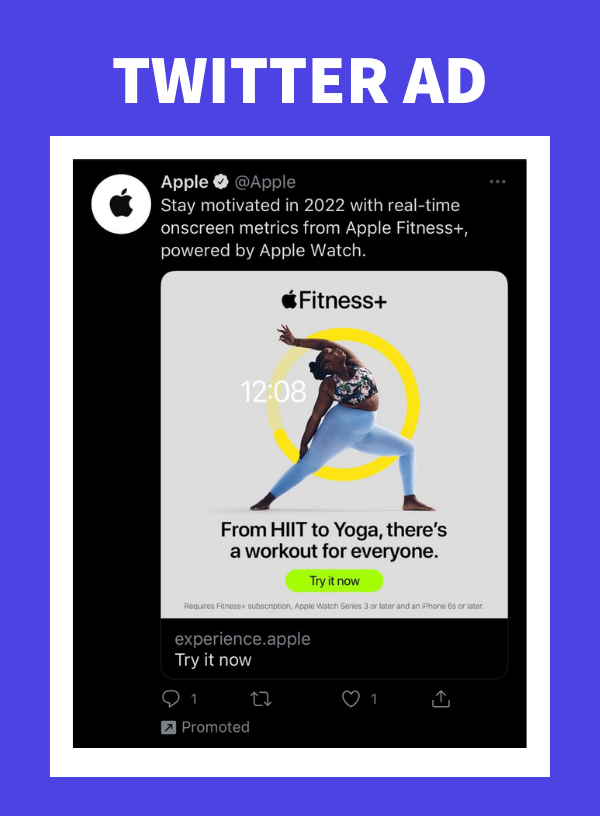
 ) to feisty marketing bullshit fighterThe lesson?https://abs.twimg.com/emoji/v2/... draggable="false" alt="👉" title="Rug van hand met naar rechts wijzende wijsvinger" aria-label="Emoji: Rug van hand met naar rechts wijzende wijsvinger"> Differentiate (or die)" title="2/ DISTINCTIVENESSWe’re more likely to notice stuff that stands out from the restThat’s why @LouisSlices—the king of radical differentiation—changed his headshot from smiley guy in a suit (boring https://abs.twimg.com/emoji/v2/... draggable="false" alt="😴" title="Slapend gezicht" aria-label="Emoji: Slapend gezicht">) to feisty marketing bullshit fighterThe lesson?https://abs.twimg.com/emoji/v2/... draggable="false" alt="👉" title="Rug van hand met naar rechts wijzende wijsvinger" aria-label="Emoji: Rug van hand met naar rechts wijzende wijsvinger"> Differentiate (or die)">
) to feisty marketing bullshit fighterThe lesson?https://abs.twimg.com/emoji/v2/... draggable="false" alt="👉" title="Rug van hand met naar rechts wijzende wijsvinger" aria-label="Emoji: Rug van hand met naar rechts wijzende wijsvinger"> Differentiate (or die)" title="2/ DISTINCTIVENESSWe’re more likely to notice stuff that stands out from the restThat’s why @LouisSlices—the king of radical differentiation—changed his headshot from smiley guy in a suit (boring https://abs.twimg.com/emoji/v2/... draggable="false" alt="😴" title="Slapend gezicht" aria-label="Emoji: Slapend gezicht">) to feisty marketing bullshit fighterThe lesson?https://abs.twimg.com/emoji/v2/... draggable="false" alt="👉" title="Rug van hand met naar rechts wijzende wijsvinger" aria-label="Emoji: Rug van hand met naar rechts wijzende wijsvinger"> Differentiate (or die)">
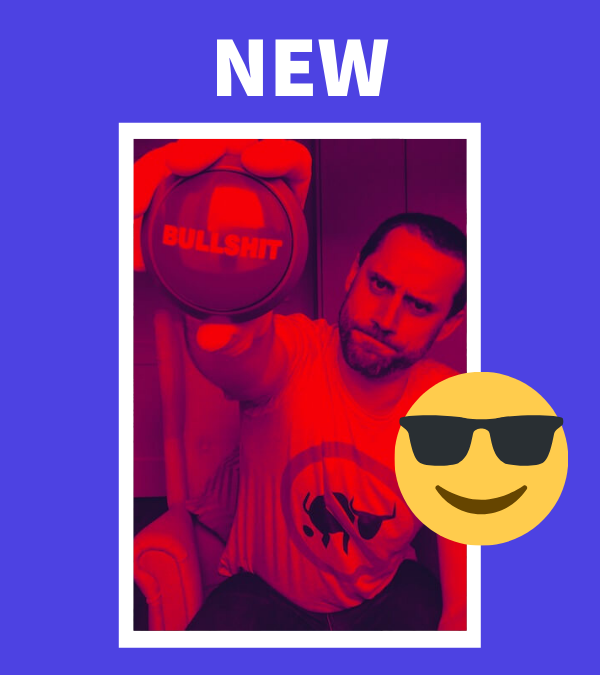 ) to feisty marketing bullshit fighterThe lesson?https://abs.twimg.com/emoji/v2/... draggable="false" alt="👉" title="Rug van hand met naar rechts wijzende wijsvinger" aria-label="Emoji: Rug van hand met naar rechts wijzende wijsvinger"> Differentiate (or die)" title="2/ DISTINCTIVENESSWe’re more likely to notice stuff that stands out from the restThat’s why @LouisSlices—the king of radical differentiation—changed his headshot from smiley guy in a suit (boring https://abs.twimg.com/emoji/v2/... draggable="false" alt="😴" title="Slapend gezicht" aria-label="Emoji: Slapend gezicht">) to feisty marketing bullshit fighterThe lesson?https://abs.twimg.com/emoji/v2/... draggable="false" alt="👉" title="Rug van hand met naar rechts wijzende wijsvinger" aria-label="Emoji: Rug van hand met naar rechts wijzende wijsvinger"> Differentiate (or die)">
) to feisty marketing bullshit fighterThe lesson?https://abs.twimg.com/emoji/v2/... draggable="false" alt="👉" title="Rug van hand met naar rechts wijzende wijsvinger" aria-label="Emoji: Rug van hand met naar rechts wijzende wijsvinger"> Differentiate (or die)" title="2/ DISTINCTIVENESSWe’re more likely to notice stuff that stands out from the restThat’s why @LouisSlices—the king of radical differentiation—changed his headshot from smiley guy in a suit (boring https://abs.twimg.com/emoji/v2/... draggable="false" alt="😴" title="Slapend gezicht" aria-label="Emoji: Slapend gezicht">) to feisty marketing bullshit fighterThe lesson?https://abs.twimg.com/emoji/v2/... draggable="false" alt="👉" title="Rug van hand met naar rechts wijzende wijsvinger" aria-label="Emoji: Rug van hand met naar rechts wijzende wijsvinger"> Differentiate (or die)">
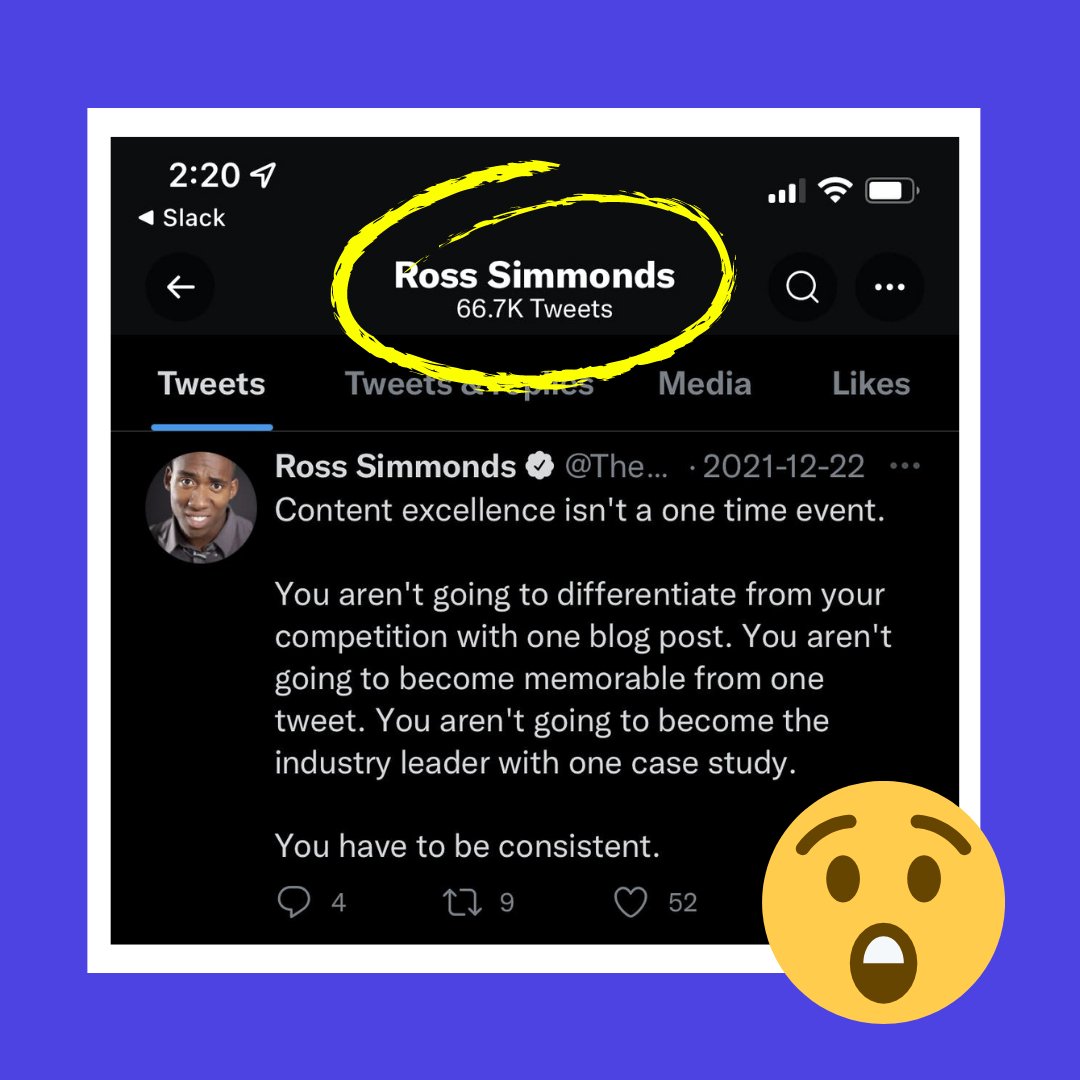 Show up consistently" title="3/ MERE EXPOSURE EFFECTThe more we see something, the more we come to like and trust itThat’s why prolific marketers like @TheCoolestCool expertly repurpose their content so they show up consistently in the places their buyers hang outThe lesson?https://abs.twimg.com/emoji/v2/... draggable="false" alt="👉" title="Rug van hand met naar rechts wijzende wijsvinger" aria-label="Emoji: Rug van hand met naar rechts wijzende wijsvinger"> Show up consistently" class="img-responsive" style="max-width:100%;"/>
Show up consistently" title="3/ MERE EXPOSURE EFFECTThe more we see something, the more we come to like and trust itThat’s why prolific marketers like @TheCoolestCool expertly repurpose their content so they show up consistently in the places their buyers hang outThe lesson?https://abs.twimg.com/emoji/v2/... draggable="false" alt="👉" title="Rug van hand met naar rechts wijzende wijsvinger" aria-label="Emoji: Rug van hand met naar rechts wijzende wijsvinger"> Show up consistently" class="img-responsive" style="max-width:100%;"/>
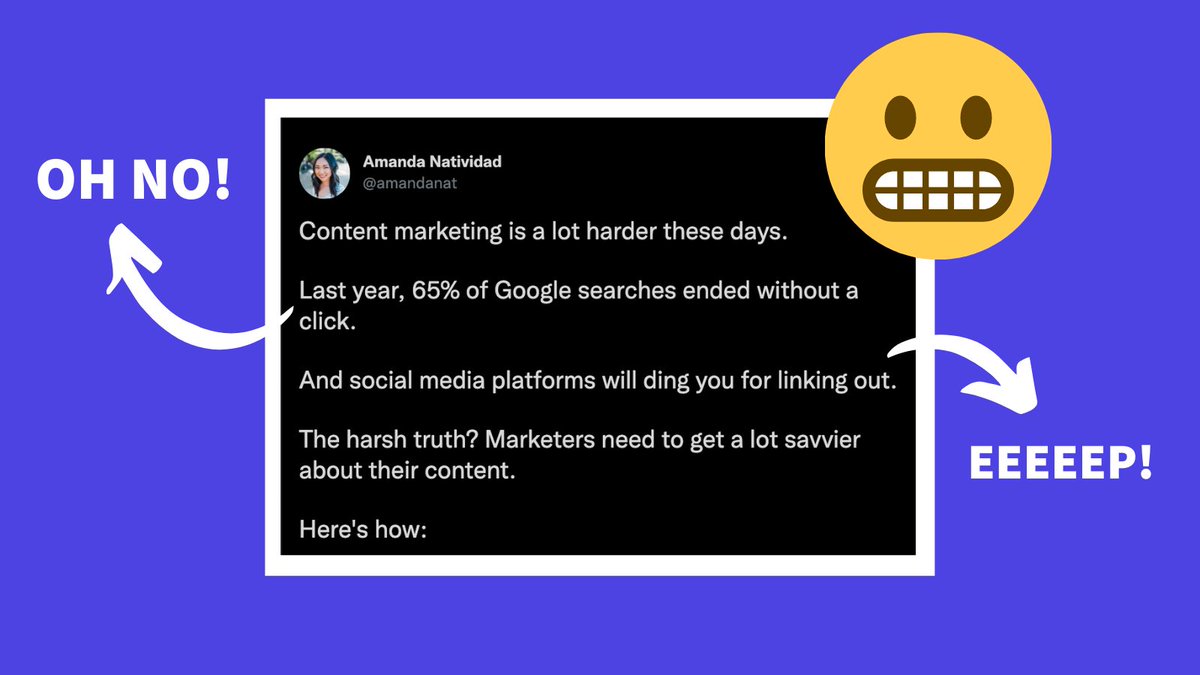 Show the risk of doing nothing" title="4/ STATUS QUO BIASWe’re resistant to change and prefer the known to unknownThat’s why smart marketers like @amandanat use stats, facts, and stories to jolt readers into realizing that sticking with the status quo is riskyThe lesson?https://abs.twimg.com/emoji/v2/... draggable="false" alt="👉" title="Rug van hand met naar rechts wijzende wijsvinger" aria-label="Emoji: Rug van hand met naar rechts wijzende wijsvinger"> Show the risk of doing nothing" class="img-responsive" style="max-width:100%;"/>
Show the risk of doing nothing" title="4/ STATUS QUO BIASWe’re resistant to change and prefer the known to unknownThat’s why smart marketers like @amandanat use stats, facts, and stories to jolt readers into realizing that sticking with the status quo is riskyThe lesson?https://abs.twimg.com/emoji/v2/... draggable="false" alt="👉" title="Rug van hand met naar rechts wijzende wijsvinger" aria-label="Emoji: Rug van hand met naar rechts wijzende wijsvinger"> Show the risk of doing nothing" class="img-responsive" style="max-width:100%;"/>
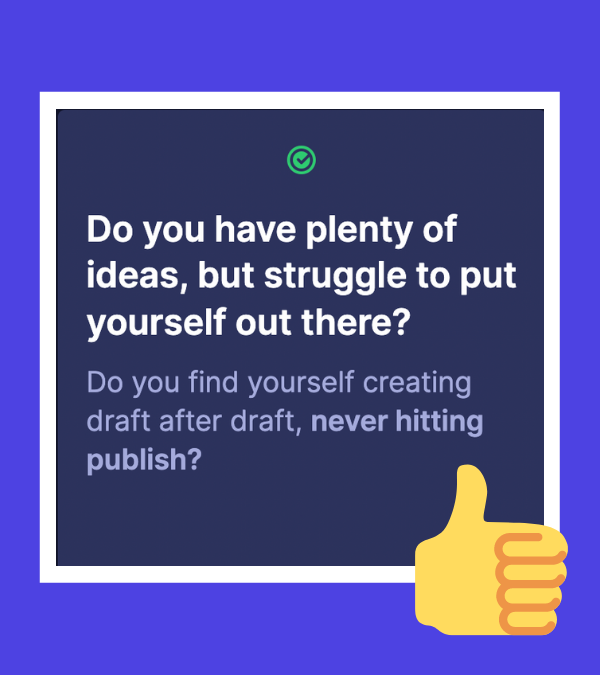 Make it feel personal" title="6/ THE BARNUM EFFECTWe’re drawn to statements that feel personal (even if they could actually apply to anyone)That’s why world-class writers like @dickiebush ask Barnum-style Qs like these on his Ship30for30 sales page. Can you relate?The lesson? https://abs.twimg.com/emoji/v2/... draggable="false" alt="👉" title="Rug van hand met naar rechts wijzende wijsvinger" aria-label="Emoji: Rug van hand met naar rechts wijzende wijsvinger"> Make it feel personal">
Make it feel personal" title="6/ THE BARNUM EFFECTWe’re drawn to statements that feel personal (even if they could actually apply to anyone)That’s why world-class writers like @dickiebush ask Barnum-style Qs like these on his Ship30for30 sales page. Can you relate?The lesson? https://abs.twimg.com/emoji/v2/... draggable="false" alt="👉" title="Rug van hand met naar rechts wijzende wijsvinger" aria-label="Emoji: Rug van hand met naar rechts wijzende wijsvinger"> Make it feel personal">
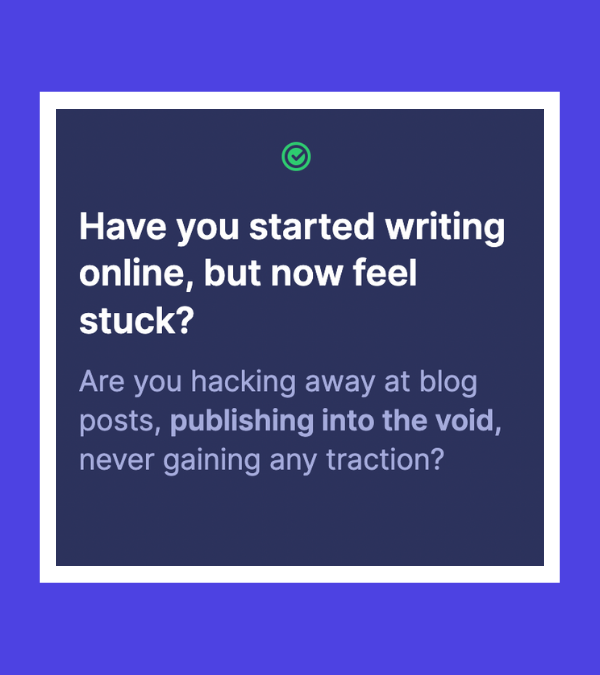 Make it feel personal" title="6/ THE BARNUM EFFECTWe’re drawn to statements that feel personal (even if they could actually apply to anyone)That’s why world-class writers like @dickiebush ask Barnum-style Qs like these on his Ship30for30 sales page. Can you relate?The lesson? https://abs.twimg.com/emoji/v2/... draggable="false" alt="👉" title="Rug van hand met naar rechts wijzende wijsvinger" aria-label="Emoji: Rug van hand met naar rechts wijzende wijsvinger"> Make it feel personal">
Make it feel personal" title="6/ THE BARNUM EFFECTWe’re drawn to statements that feel personal (even if they could actually apply to anyone)That’s why world-class writers like @dickiebush ask Barnum-style Qs like these on his Ship30for30 sales page. Can you relate?The lesson? https://abs.twimg.com/emoji/v2/... draggable="false" alt="👉" title="Rug van hand met naar rechts wijzende wijsvinger" aria-label="Emoji: Rug van hand met naar rechts wijzende wijsvinger"> Make it feel personal">
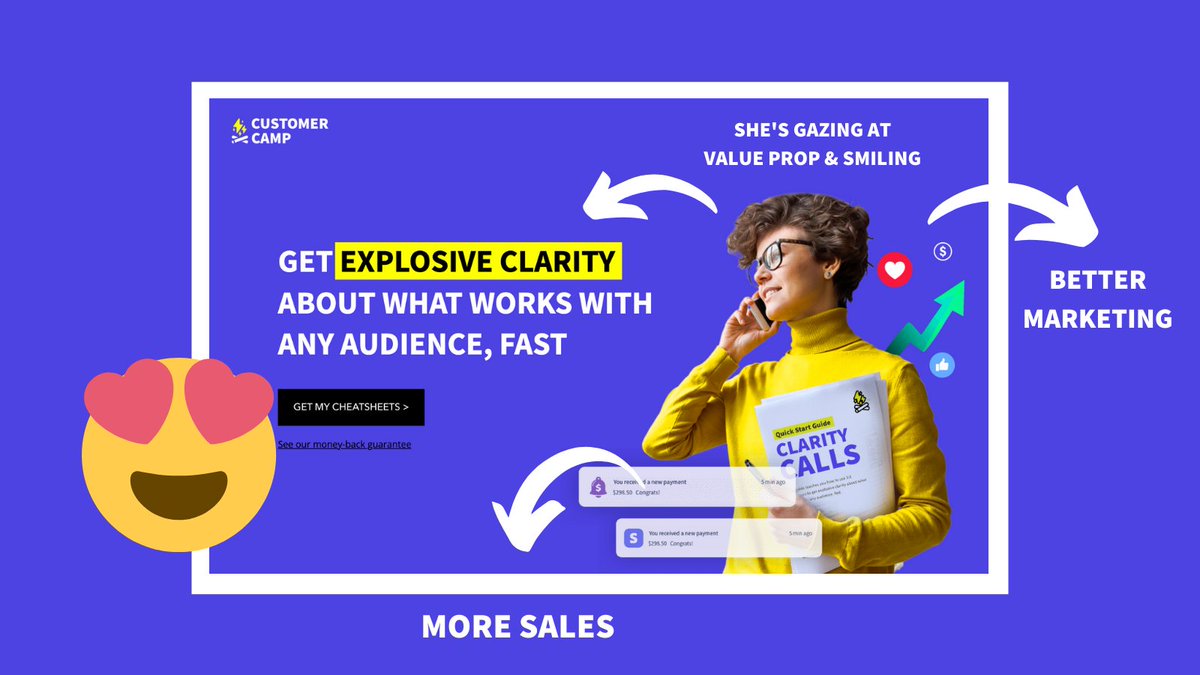 Prime people to buy" title="7/ PRIMINGWe’re unconsciously influenced by even small detailsThat’s why I use imagery on my Clarity Call Cheatsheet sales page that primes visitors to connect customer discovery with better marketing and increased salesThe lesson?https://abs.twimg.com/emoji/v2/... draggable="false" alt="👉" title="Rug van hand met naar rechts wijzende wijsvinger" aria-label="Emoji: Rug van hand met naar rechts wijzende wijsvinger"> Prime people to buy" class="img-responsive" style="max-width:100%;"/>
Prime people to buy" title="7/ PRIMINGWe’re unconsciously influenced by even small detailsThat’s why I use imagery on my Clarity Call Cheatsheet sales page that primes visitors to connect customer discovery with better marketing and increased salesThe lesson?https://abs.twimg.com/emoji/v2/... draggable="false" alt="👉" title="Rug van hand met naar rechts wijzende wijsvinger" aria-label="Emoji: Rug van hand met naar rechts wijzende wijsvinger"> Prime people to buy" class="img-responsive" style="max-width:100%;"/>
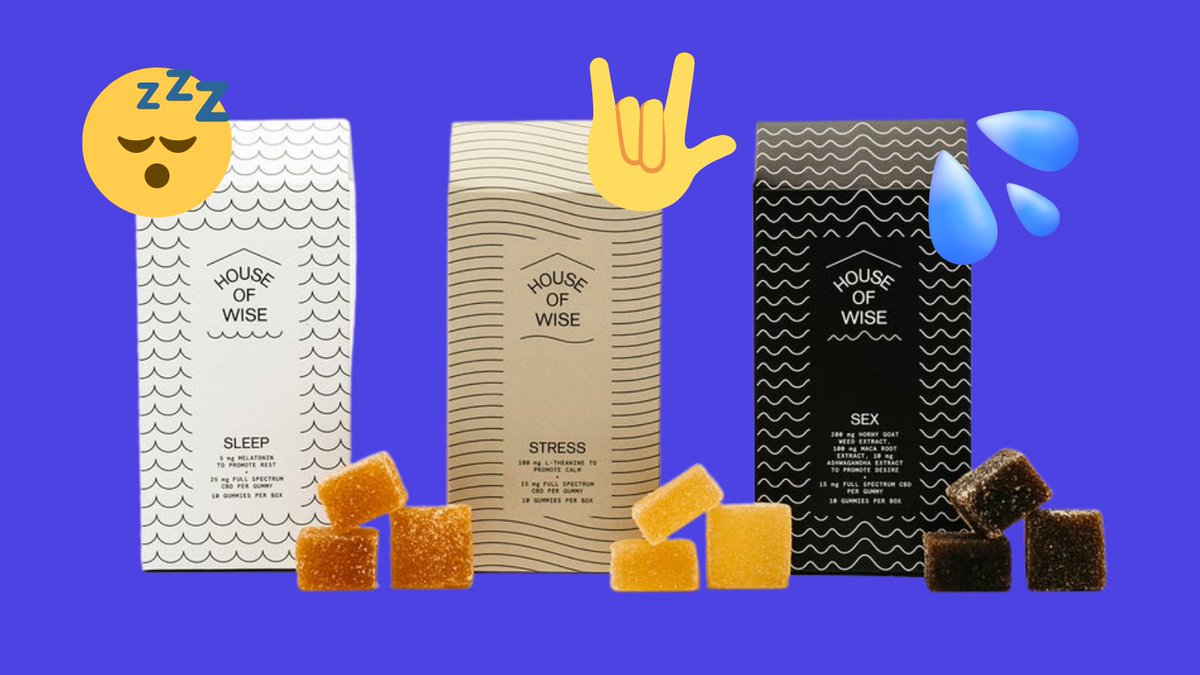 Frame your offer carefully" title="8/ FRAMINGHow something is presented very much impacts our perception of itThat’s why @AmandaMGoetz’s company House of Wise doesn’t just sell CBD products but instead sells less stress, hotter sex, and better sleepThe lesson?https://abs.twimg.com/emoji/v2/... draggable="false" alt="👉" title="Rug van hand met naar rechts wijzende wijsvinger" aria-label="Emoji: Rug van hand met naar rechts wijzende wijsvinger"> Frame your offer carefully" class="img-responsive" style="max-width:100%;"/>
Frame your offer carefully" title="8/ FRAMINGHow something is presented very much impacts our perception of itThat’s why @AmandaMGoetz’s company House of Wise doesn’t just sell CBD products but instead sells less stress, hotter sex, and better sleepThe lesson?https://abs.twimg.com/emoji/v2/... draggable="false" alt="👉" title="Rug van hand met naar rechts wijzende wijsvinger" aria-label="Emoji: Rug van hand met naar rechts wijzende wijsvinger"> Frame your offer carefully" class="img-responsive" style="max-width:100%;"/>
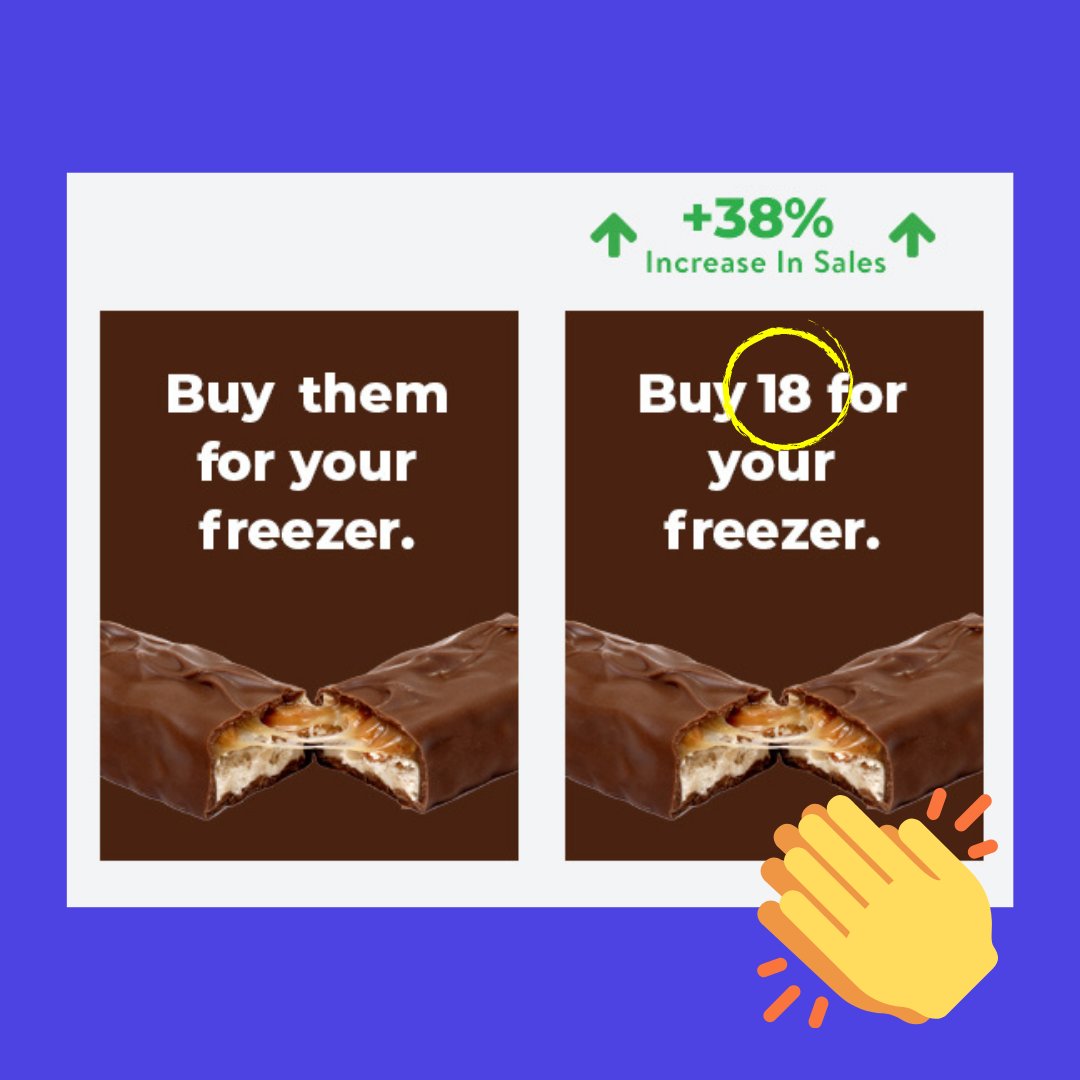 Use anchors strategically" title="9/ ANCHORINGThe first piece of information we see often sets our expectationsThat’s why Snickers grew sales by 38% simply by changing the anchor from ‘them’ to ‘18’ (cc: the @thebrainybiz podcast)The lesson?https://abs.twimg.com/emoji/v2/... draggable="false" alt="👉" title="Rug van hand met naar rechts wijzende wijsvinger" aria-label="Emoji: Rug van hand met naar rechts wijzende wijsvinger"> Use anchors strategically" class="img-responsive" style="max-width:100%;"/>
Use anchors strategically" title="9/ ANCHORINGThe first piece of information we see often sets our expectationsThat’s why Snickers grew sales by 38% simply by changing the anchor from ‘them’ to ‘18’ (cc: the @thebrainybiz podcast)The lesson?https://abs.twimg.com/emoji/v2/... draggable="false" alt="👉" title="Rug van hand met naar rechts wijzende wijsvinger" aria-label="Emoji: Rug van hand met naar rechts wijzende wijsvinger"> Use anchors strategically" class="img-responsive" style="max-width:100%;"/>
 Showcase your authority" title="10/ AUTHORITY BIASWe’re more trusting of authority figures (eg. doctors, celebrities, media)That’s why baddies like @kaleighf and @The_MMW showcase the big publications they write for or have been featured in their Twitter profilesThe lesson?https://abs.twimg.com/emoji/v2/... draggable="false" alt="👉" title="Rug van hand met naar rechts wijzende wijsvinger" aria-label="Emoji: Rug van hand met naar rechts wijzende wijsvinger"> Showcase your authority">
Showcase your authority" title="10/ AUTHORITY BIASWe’re more trusting of authority figures (eg. doctors, celebrities, media)That’s why baddies like @kaleighf and @The_MMW showcase the big publications they write for or have been featured in their Twitter profilesThe lesson?https://abs.twimg.com/emoji/v2/... draggable="false" alt="👉" title="Rug van hand met naar rechts wijzende wijsvinger" aria-label="Emoji: Rug van hand met naar rechts wijzende wijsvinger"> Showcase your authority">
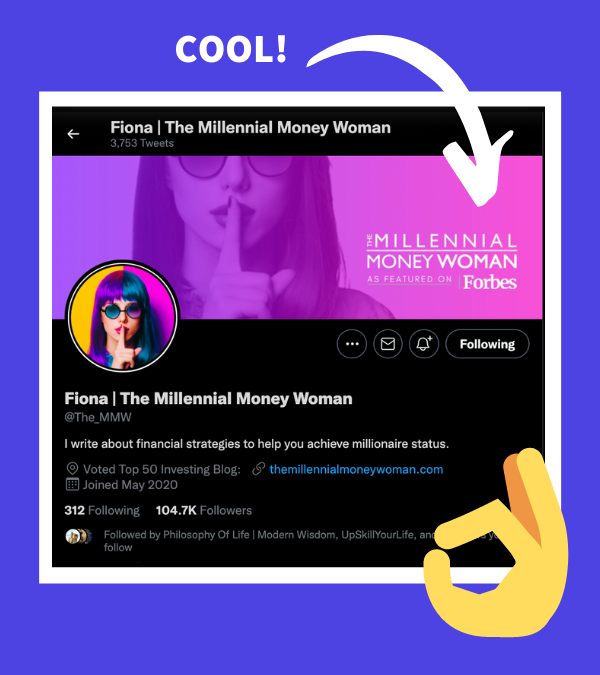 Showcase your authority" title="10/ AUTHORITY BIASWe’re more trusting of authority figures (eg. doctors, celebrities, media)That’s why baddies like @kaleighf and @The_MMW showcase the big publications they write for or have been featured in their Twitter profilesThe lesson?https://abs.twimg.com/emoji/v2/... draggable="false" alt="👉" title="Rug van hand met naar rechts wijzende wijsvinger" aria-label="Emoji: Rug van hand met naar rechts wijzende wijsvinger"> Showcase your authority">
Showcase your authority" title="10/ AUTHORITY BIASWe’re more trusting of authority figures (eg. doctors, celebrities, media)That’s why baddies like @kaleighf and @The_MMW showcase the big publications they write for or have been featured in their Twitter profilesThe lesson?https://abs.twimg.com/emoji/v2/... draggable="false" alt="👉" title="Rug van hand met naar rechts wijzende wijsvinger" aria-label="Emoji: Rug van hand met naar rechts wijzende wijsvinger"> Showcase your authority">
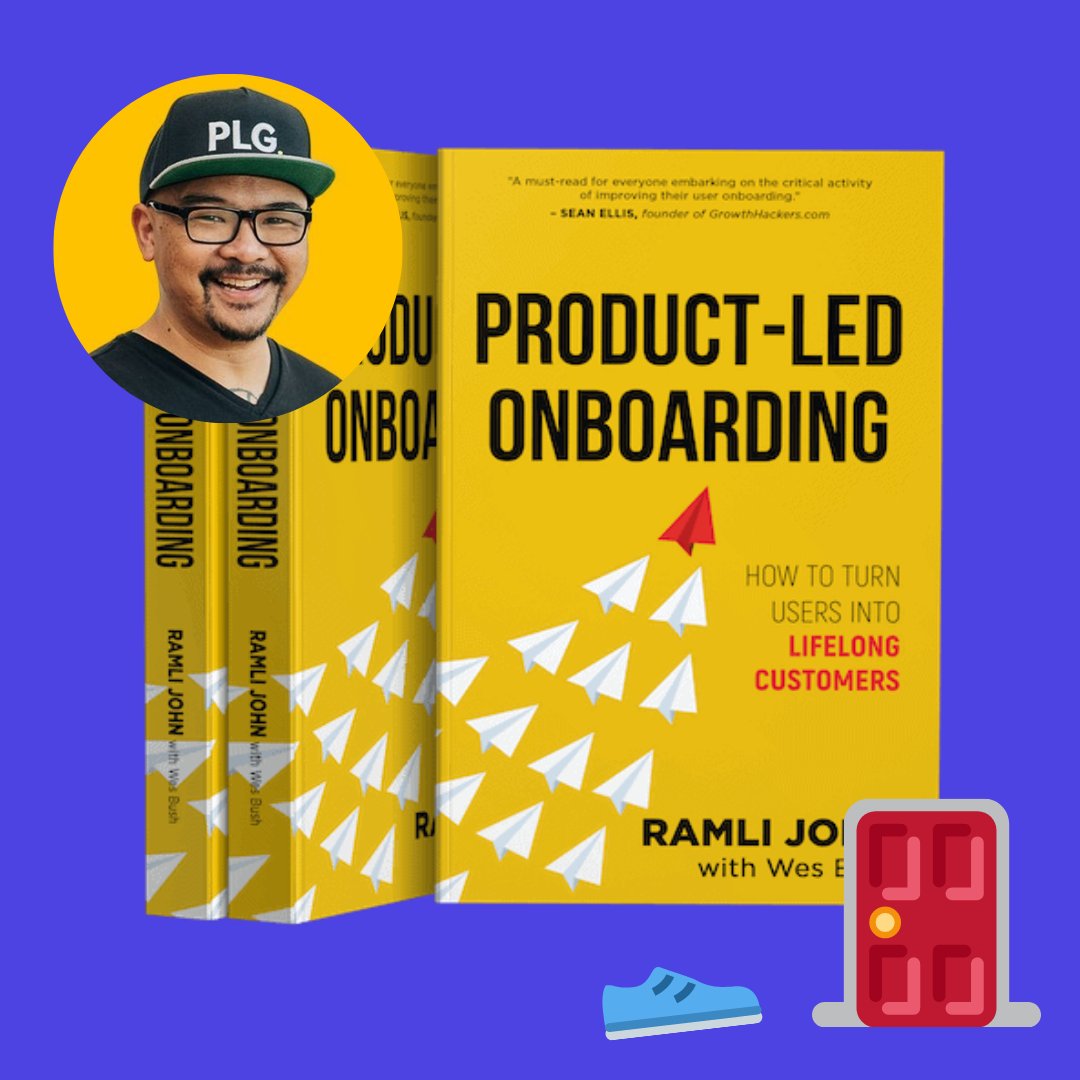 Start with a small ask" title="11/ FOOT-IN-DOOR TECHNIQUEWe’re more likely to agree to a bigger request after already agreeing to a small oneThis is why product-led growth experts like @ramlijohn suggest letting prospects try your product for free *before* committingThe lesson?https://abs.twimg.com/emoji/v2/... draggable="false" alt="👉" title="Rug van hand met naar rechts wijzende wijsvinger" aria-label="Emoji: Rug van hand met naar rechts wijzende wijsvinger"> Start with a small ask" class="img-responsive" style="max-width:100%;"/>
Start with a small ask" title="11/ FOOT-IN-DOOR TECHNIQUEWe’re more likely to agree to a bigger request after already agreeing to a small oneThis is why product-led growth experts like @ramlijohn suggest letting prospects try your product for free *before* committingThe lesson?https://abs.twimg.com/emoji/v2/... draggable="false" alt="👉" title="Rug van hand met naar rechts wijzende wijsvinger" aria-label="Emoji: Rug van hand met naar rechts wijzende wijsvinger"> Start with a small ask" class="img-responsive" style="max-width:100%;"/>
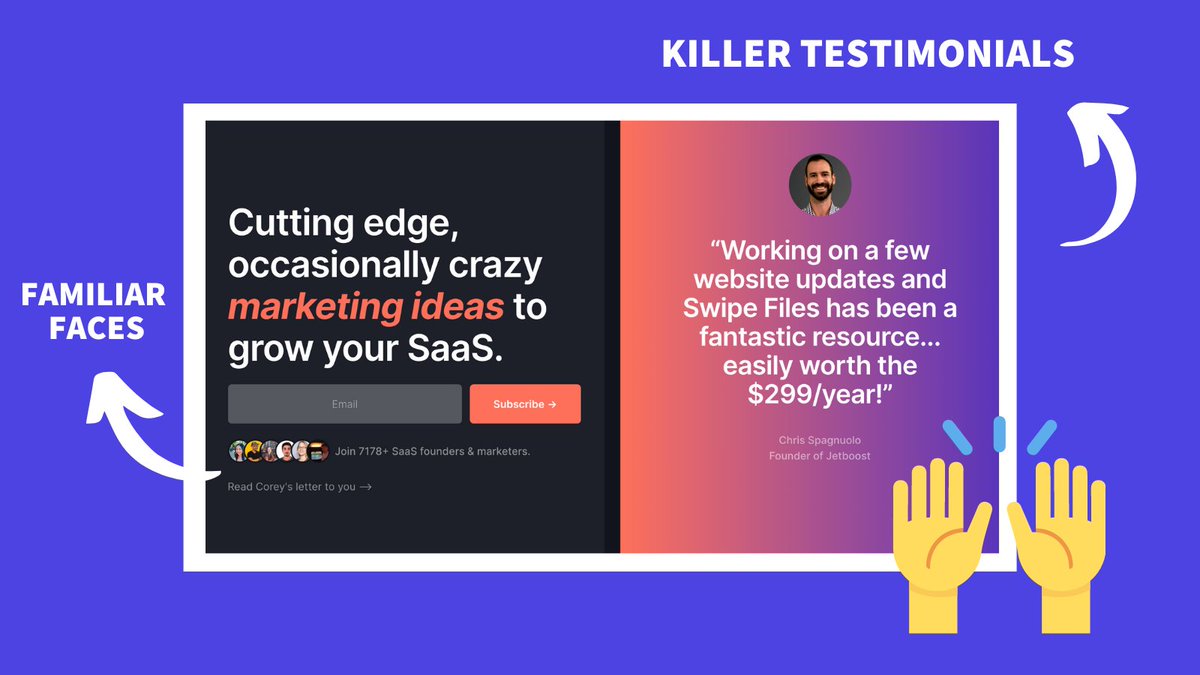 Let others sell for you" title="12/ SOCIAL PROOFWe& #39;re more trusting of stuff that other people already trustThat’s why smart marketers like @coreyhainesco pepper their newsletter signup pages with glowing testimonials and headshots of well-known marketersThe lesson?https://abs.twimg.com/emoji/v2/... draggable="false" alt="👉" title="Rug van hand met naar rechts wijzende wijsvinger" aria-label="Emoji: Rug van hand met naar rechts wijzende wijsvinger"> Let others sell for you" class="img-responsive" style="max-width:100%;"/>
Let others sell for you" title="12/ SOCIAL PROOFWe& #39;re more trusting of stuff that other people already trustThat’s why smart marketers like @coreyhainesco pepper their newsletter signup pages with glowing testimonials and headshots of well-known marketersThe lesson?https://abs.twimg.com/emoji/v2/... draggable="false" alt="👉" title="Rug van hand met naar rechts wijzende wijsvinger" aria-label="Emoji: Rug van hand met naar rechts wijzende wijsvinger"> Let others sell for you" class="img-responsive" style="max-width:100%;"/>
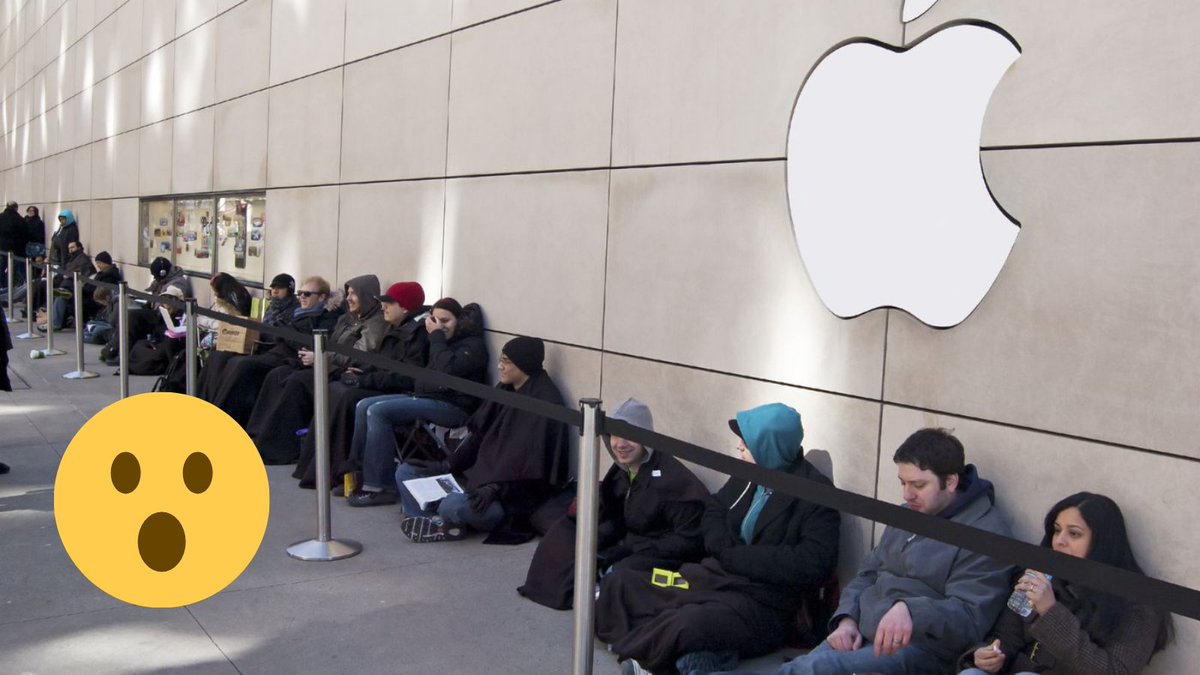 Reducing availability can drive demand" title="13/ SCARCITYWe place a higher value on things when they& #39;re in limited supplyThat’s why when Apple releases a new product they limit the number available so that they create a buying frenzyThe lesson?https://abs.twimg.com/emoji/v2/... draggable="false" alt="👉" title="Rug van hand met naar rechts wijzende wijsvinger" aria-label="Emoji: Rug van hand met naar rechts wijzende wijsvinger"> Reducing availability can drive demand" class="img-responsive" style="max-width:100%;"/>
Reducing availability can drive demand" title="13/ SCARCITYWe place a higher value on things when they& #39;re in limited supplyThat’s why when Apple releases a new product they limit the number available so that they create a buying frenzyThe lesson?https://abs.twimg.com/emoji/v2/... draggable="false" alt="👉" title="Rug van hand met naar rechts wijzende wijsvinger" aria-label="Emoji: Rug van hand met naar rechts wijzende wijsvinger"> Reducing availability can drive demand" class="img-responsive" style="max-width:100%;"/>
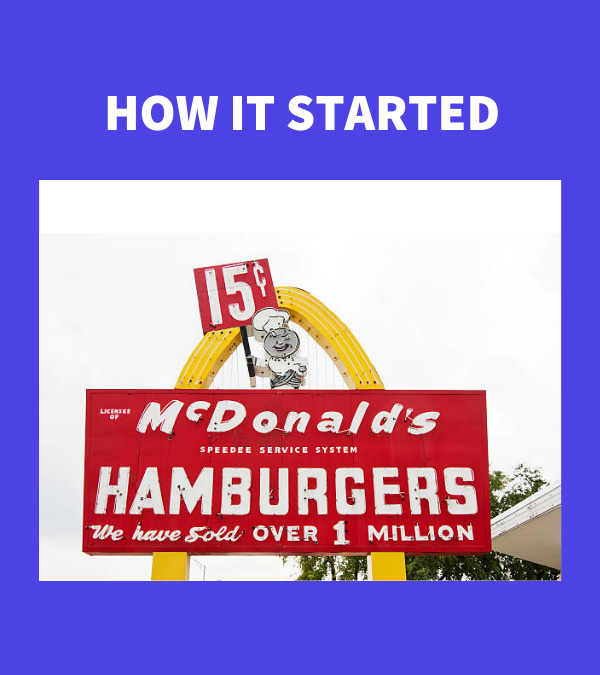 The lesson?https://abs.twimg.com/emoji/v2/... draggable="false" alt="👉" title="Rug van hand met naar rechts wijzende wijsvinger" aria-label="Emoji: Rug van hand met naar rechts wijzende wijsvinger"> Showcase popularity" title="14/ BANDWAGON EFFECTWe’re more likely to do something if everyone else is doing itThat’s why in 1957 McDonald’s started showing how many customers they’d served on their signs. Today, McDonald& #39;s serves 62M customers PER DAY https://abs.twimg.com/emoji/v2/... draggable="false" alt="😲" title="Verwonderd gezicht" aria-label="Emoji: Verwonderd gezicht">The lesson?https://abs.twimg.com/emoji/v2/... draggable="false" alt="👉" title="Rug van hand met naar rechts wijzende wijsvinger" aria-label="Emoji: Rug van hand met naar rechts wijzende wijsvinger"> Showcase popularity">
The lesson?https://abs.twimg.com/emoji/v2/... draggable="false" alt="👉" title="Rug van hand met naar rechts wijzende wijsvinger" aria-label="Emoji: Rug van hand met naar rechts wijzende wijsvinger"> Showcase popularity" title="14/ BANDWAGON EFFECTWe’re more likely to do something if everyone else is doing itThat’s why in 1957 McDonald’s started showing how many customers they’d served on their signs. Today, McDonald& #39;s serves 62M customers PER DAY https://abs.twimg.com/emoji/v2/... draggable="false" alt="😲" title="Verwonderd gezicht" aria-label="Emoji: Verwonderd gezicht">The lesson?https://abs.twimg.com/emoji/v2/... draggable="false" alt="👉" title="Rug van hand met naar rechts wijzende wijsvinger" aria-label="Emoji: Rug van hand met naar rechts wijzende wijsvinger"> Showcase popularity">
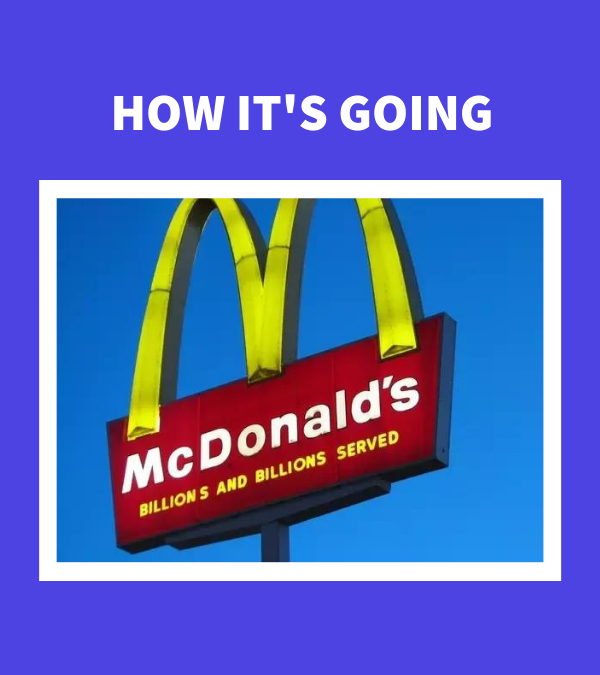 The lesson?https://abs.twimg.com/emoji/v2/... draggable="false" alt="👉" title="Rug van hand met naar rechts wijzende wijsvinger" aria-label="Emoji: Rug van hand met naar rechts wijzende wijsvinger"> Showcase popularity" title="14/ BANDWAGON EFFECTWe’re more likely to do something if everyone else is doing itThat’s why in 1957 McDonald’s started showing how many customers they’d served on their signs. Today, McDonald& #39;s serves 62M customers PER DAY https://abs.twimg.com/emoji/v2/... draggable="false" alt="😲" title="Verwonderd gezicht" aria-label="Emoji: Verwonderd gezicht">The lesson?https://abs.twimg.com/emoji/v2/... draggable="false" alt="👉" title="Rug van hand met naar rechts wijzende wijsvinger" aria-label="Emoji: Rug van hand met naar rechts wijzende wijsvinger"> Showcase popularity">
The lesson?https://abs.twimg.com/emoji/v2/... draggable="false" alt="👉" title="Rug van hand met naar rechts wijzende wijsvinger" aria-label="Emoji: Rug van hand met naar rechts wijzende wijsvinger"> Showcase popularity" title="14/ BANDWAGON EFFECTWe’re more likely to do something if everyone else is doing itThat’s why in 1957 McDonald’s started showing how many customers they’d served on their signs. Today, McDonald& #39;s serves 62M customers PER DAY https://abs.twimg.com/emoji/v2/... draggable="false" alt="😲" title="Verwonderd gezicht" aria-label="Emoji: Verwonderd gezicht">The lesson?https://abs.twimg.com/emoji/v2/... draggable="false" alt="👉" title="Rug van hand met naar rechts wijzende wijsvinger" aria-label="Emoji: Rug van hand met naar rechts wijzende wijsvinger"> Showcase popularity">
 Highlight what’s at stake" title="15/ LOSS AVERSIONWe’re more motivated to avoid losses than we are to receive gainsThat’s why Amazon highlights the savings people could *lose* when they cancel their Prime membership to deter them from canceling (cc: @p_agnew)The lesson? https://abs.twimg.com/emoji/v2/... draggable="false" alt="👉" title="Rug van hand met naar rechts wijzende wijsvinger" aria-label="Emoji: Rug van hand met naar rechts wijzende wijsvinger"> Highlight what’s at stake" class="img-responsive" style="max-width:100%;"/>
Highlight what’s at stake" title="15/ LOSS AVERSIONWe’re more motivated to avoid losses than we are to receive gainsThat’s why Amazon highlights the savings people could *lose* when they cancel their Prime membership to deter them from canceling (cc: @p_agnew)The lesson? https://abs.twimg.com/emoji/v2/... draggable="false" alt="👉" title="Rug van hand met naar rechts wijzende wijsvinger" aria-label="Emoji: Rug van hand met naar rechts wijzende wijsvinger"> Highlight what’s at stake" class="img-responsive" style="max-width:100%;"/>
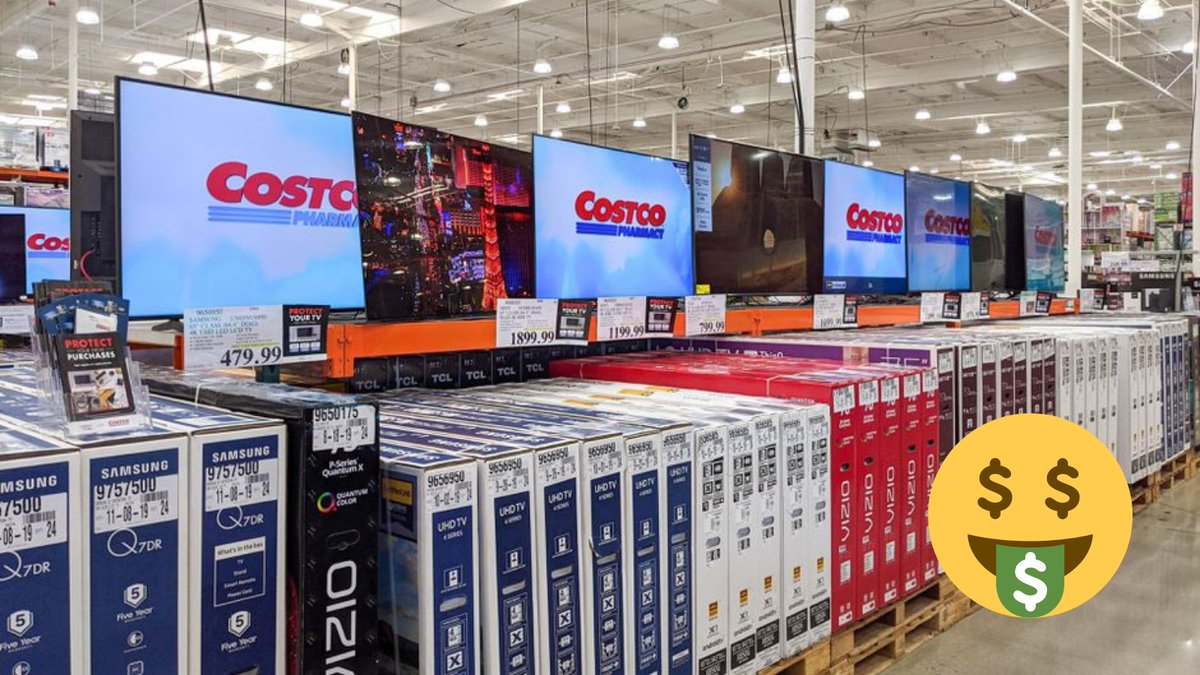 Use contrast to show value" title="16/ RELATIVITYWe struggle to understand the value of a purchase without something to compare it toThat’s why Costco puts the TVs & laptops near the entrance. Seeing how cheap big-ticket items makes other products appear cheaper tooThe lesson?https://abs.twimg.com/emoji/v2/... draggable="false" alt="👉" title="Rug van hand met naar rechts wijzende wijsvinger" aria-label="Emoji: Rug van hand met naar rechts wijzende wijsvinger"> Use contrast to show value" class="img-responsive" style="max-width:100%;"/>
Use contrast to show value" title="16/ RELATIVITYWe struggle to understand the value of a purchase without something to compare it toThat’s why Costco puts the TVs & laptops near the entrance. Seeing how cheap big-ticket items makes other products appear cheaper tooThe lesson?https://abs.twimg.com/emoji/v2/... draggable="false" alt="👉" title="Rug van hand met naar rechts wijzende wijsvinger" aria-label="Emoji: Rug van hand met naar rechts wijzende wijsvinger"> Use contrast to show value" class="img-responsive" style="max-width:100%;"/>
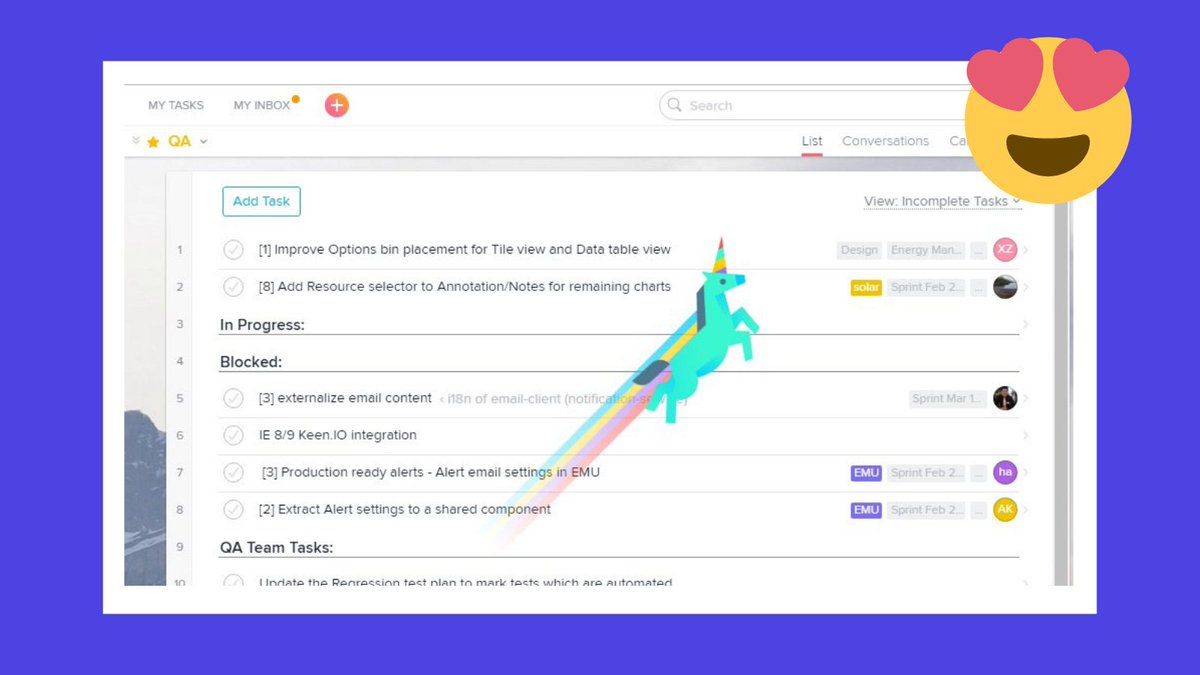 Deliver surprise value" title="17/ DELIGHTWhen we receive unexpected value we feel intense joyThat’s why Asana users are delighted when they first see the celebration unicorn (AKA a surprise unicorn graphic that flies across your screen after completing a few tasks)The lesson?https://abs.twimg.com/emoji/v2/... draggable="false" alt="👉" title="Rug van hand met naar rechts wijzende wijsvinger" aria-label="Emoji: Rug van hand met naar rechts wijzende wijsvinger"> Deliver surprise value" class="img-responsive" style="max-width:100%;"/>
Deliver surprise value" title="17/ DELIGHTWhen we receive unexpected value we feel intense joyThat’s why Asana users are delighted when they first see the celebration unicorn (AKA a surprise unicorn graphic that flies across your screen after completing a few tasks)The lesson?https://abs.twimg.com/emoji/v2/... draggable="false" alt="👉" title="Rug van hand met naar rechts wijzende wijsvinger" aria-label="Emoji: Rug van hand met naar rechts wijzende wijsvinger"> Deliver surprise value" class="img-responsive" style="max-width:100%;"/>
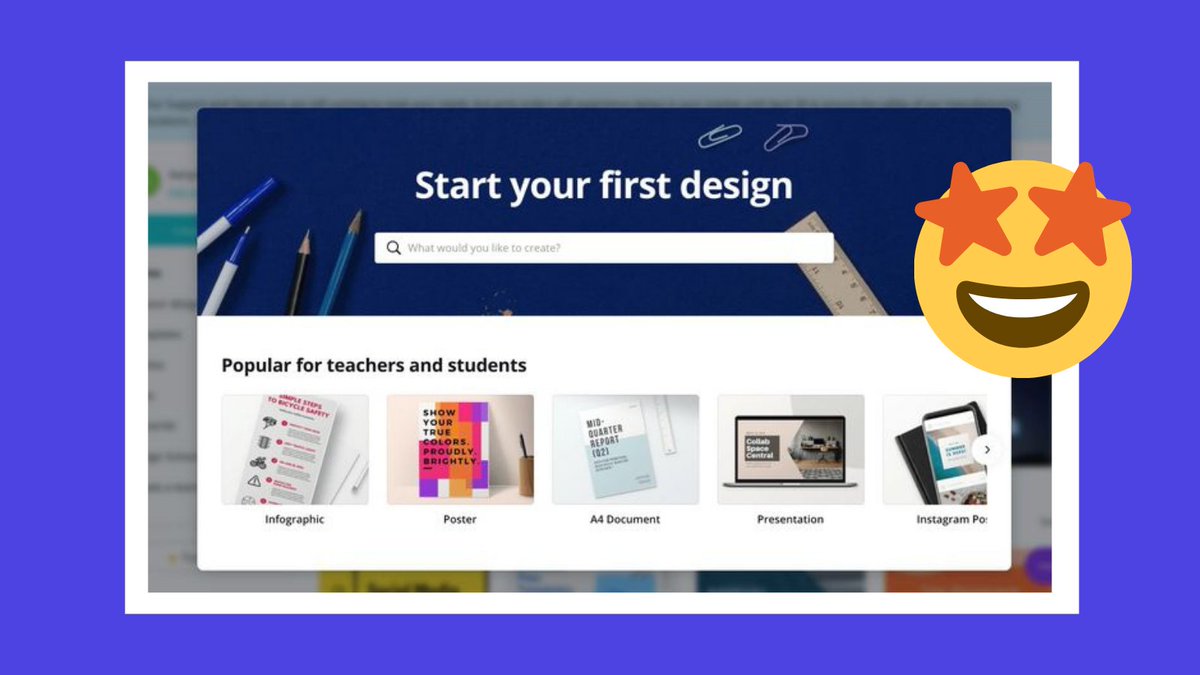 Co-create with users" title="18/ IKEA EFFECTWe place very high value on things that we had a hand in creatingThat’s why Canva makes it extremely easy to create your first design by providing 1000s of templatesThey help regular people feel like world-class designersThe lesson?https://abs.twimg.com/emoji/v2/... draggable="false" alt="👉" title="Rug van hand met naar rechts wijzende wijsvinger" aria-label="Emoji: Rug van hand met naar rechts wijzende wijsvinger"> Co-create with users" class="img-responsive" style="max-width:100%;"/>
Co-create with users" title="18/ IKEA EFFECTWe place very high value on things that we had a hand in creatingThat’s why Canva makes it extremely easy to create your first design by providing 1000s of templatesThey help regular people feel like world-class designersThe lesson?https://abs.twimg.com/emoji/v2/... draggable="false" alt="👉" title="Rug van hand met naar rechts wijzende wijsvinger" aria-label="Emoji: Rug van hand met naar rechts wijzende wijsvinger"> Co-create with users" class="img-responsive" style="max-width:100%;"/>
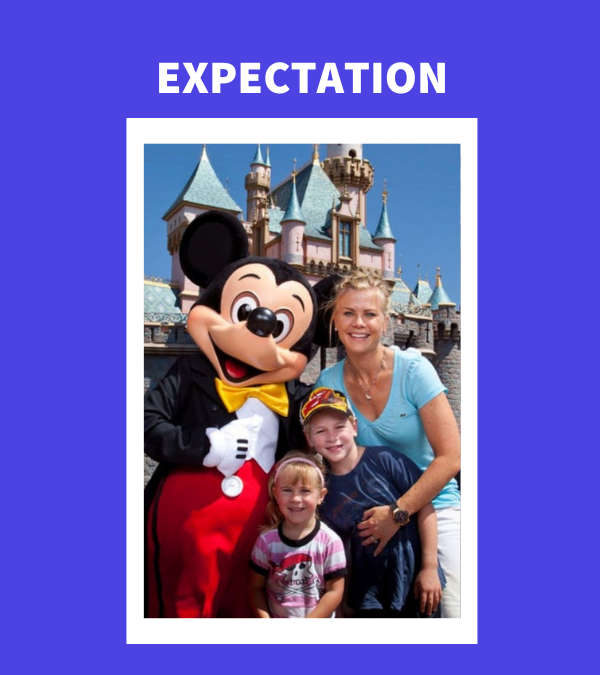 Create positive peaks/ends" title="19/ PEAK-END RULEWe judge an experience by its peak moment and how it endsThat’s why Disney carefully crafts the experience to deliver high peaks and positive ends for guests—so they forget the crowds or hours spent waiting in linesThe lesson?https://abs.twimg.com/emoji/v2/... draggable="false" alt="👉" title="Rug van hand met naar rechts wijzende wijsvinger" aria-label="Emoji: Rug van hand met naar rechts wijzende wijsvinger"> Create positive peaks/ends">
Create positive peaks/ends" title="19/ PEAK-END RULEWe judge an experience by its peak moment and how it endsThat’s why Disney carefully crafts the experience to deliver high peaks and positive ends for guests—so they forget the crowds or hours spent waiting in linesThe lesson?https://abs.twimg.com/emoji/v2/... draggable="false" alt="👉" title="Rug van hand met naar rechts wijzende wijsvinger" aria-label="Emoji: Rug van hand met naar rechts wijzende wijsvinger"> Create positive peaks/ends">
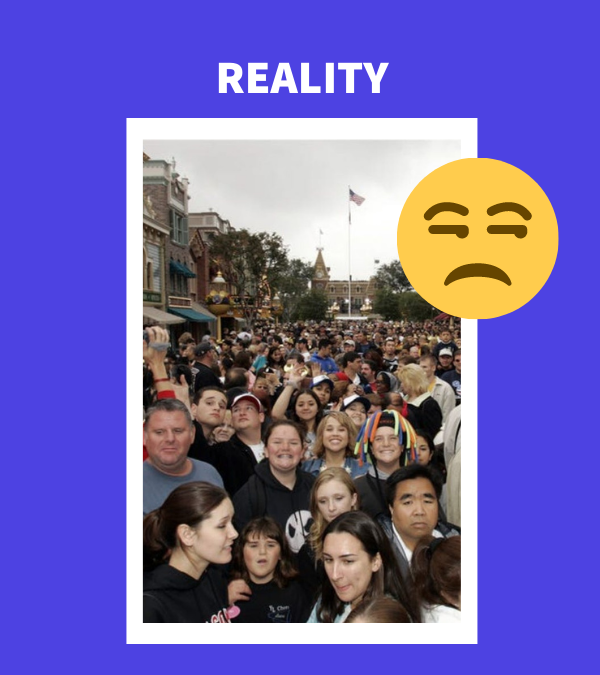 Create positive peaks/ends" title="19/ PEAK-END RULEWe judge an experience by its peak moment and how it endsThat’s why Disney carefully crafts the experience to deliver high peaks and positive ends for guests—so they forget the crowds or hours spent waiting in linesThe lesson?https://abs.twimg.com/emoji/v2/... draggable="false" alt="👉" title="Rug van hand met naar rechts wijzende wijsvinger" aria-label="Emoji: Rug van hand met naar rechts wijzende wijsvinger"> Create positive peaks/ends">
Create positive peaks/ends" title="19/ PEAK-END RULEWe judge an experience by its peak moment and how it endsThat’s why Disney carefully crafts the experience to deliver high peaks and positive ends for guests—so they forget the crowds or hours spent waiting in linesThe lesson?https://abs.twimg.com/emoji/v2/... draggable="false" alt="👉" title="Rug van hand met naar rechts wijzende wijsvinger" aria-label="Emoji: Rug van hand met naar rechts wijzende wijsvinger"> Create positive peaks/ends">
